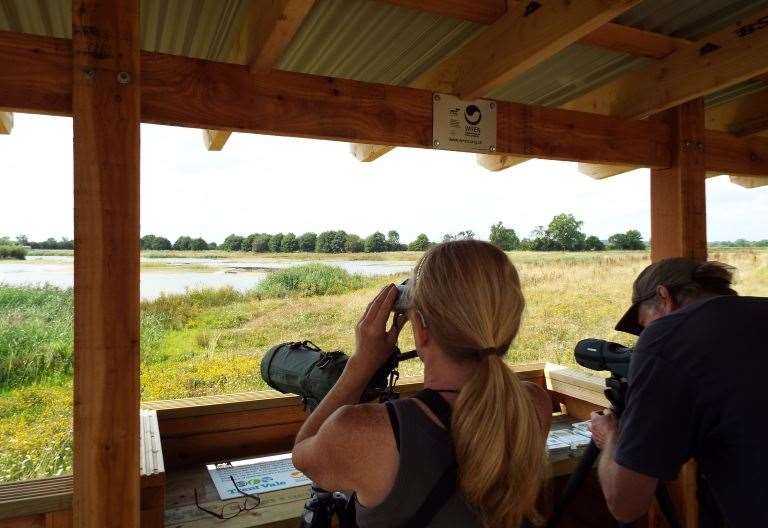[ad_1]
For many people, the only Nottinghamshire Wildlife Trust site that they are aware of is Attenborough Nature Reserve. Attenborough is one of the best known reserves in the UK and receives hundreds of thousands of visitors a year, but the trust also cares for a number of other wetland gems, writes Erin McDaid, of Nottinghamshire Wildlife Trust.
Back in 1999, Nottinghamshire Wildlife Trust took over the long-term lease of the Besthorpe Nature Reserve from Lafarge Aggregates, now part of the LafargeHolcim group.
Situated in the very heart of the Trent Vale nestled between the Trentside villages of Collingham and Besthorpe, the site, like many of our wetland nature reserves, was previously a commercial sand and gravel quarry. The worked out lagoons and old processing plant have long-since been reclaimed by nature (with a significant helping hand) and are now a haven for wildlife.
Thanks to the sterling efforts of local volunteers the reserve continues to develop and during the pandemic, it provided something of a lifeline for local communities desperate for a regular nature fix.
Like the lagoons on many old gravel pit complexes that Nottinghamshire Wildlife Trust has acquired down the years, the main water body on the reserve, known as Mons Pool, was very deep and steep sided. As a result it was particularly rich, with little scope for marginal vegetation to establish and few shallows for wading birds, but the overall range of habitats across the reserve, its Trentside location and the fact it borders another large reserve being developed by the RSPB, Langford Lowfields, meant it had tremendous potential.
Fast forward a decade and the Wildlife Trust, and thanks to our involvement in the ambitious Trent Vale Landscape Partnership funded by the National Lottery Heritage Fund were able to carry out a huge habitat restoration project – which remains the largest of its type we’ve ever undertaken.
This involved a huge amount of earth moving re-establish a once-thriving reedbed in the northern section of the reserve and the material dug out of the reedbed was used to carefully re-profile Mons Pool, creating a complex mix of shallows and shelving margins. These provided the diversity required for a myriad of species to thrive including the plants and invertebrates that provide the building blocks for success of species higher up the food chain, including wading birds.
More recent investment has included wheelchair accessible paths and wildlife watching facilities.
These access improvement have made possible thanks, in no small part, to the efforts of our stalwart local volunteer warden Andrew Hindmarsh and other volunteers and supporters including local councillors and businesses.
The island in Mons Pool was, for many years, home to one of the county’s largest colonies of heron, a sizeable cormorant roost and a rookery.
The nesting spots are now shared with a relative newcomer – little egrets.
A decade ago, the reserve became the first location in the county confirmed for breeding little egrets a species that, not so many years ago, would only been seen in southern Europe.
Once a rare visitor to our shores, these elegant birds are now a regular sight on our coasts and increasingly common inland. They have expanded their range, likely due to increasing temperatures caused by climate change and first bred in the UK in 1996 – moving northwards ever since
Alongside the entrance track to the reserve there are some attractive wet meadows which are often home to sheep from our conservation grazing ‘flying flock’.
In summer the reserve is alive with visitors including terns, swifts and swallows as well as colourful dragonflies.
In winter the reserve is a good place to spot a range of over wintering ducks such as wigeon, tufted duck, gadwall, pochard, mallard and teal.
Fields to the north of the reserve are often a good place to spot Whooper swans. The mix of habitats and its proximity to the Langford Lowfields make it an ideal destination for a day’s wildlife watching.
Depending how much time you’ve got to spare you could also take in Spalford Warren, a fascinating inland sand dune system, just a little further up the A1133 Newark to Gainsborough Road.
[ad_2]
